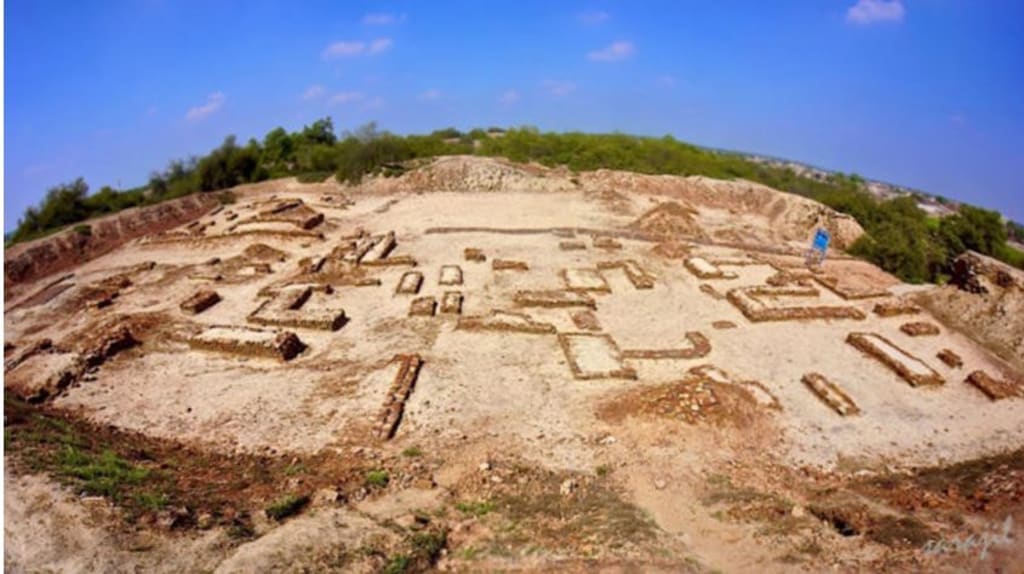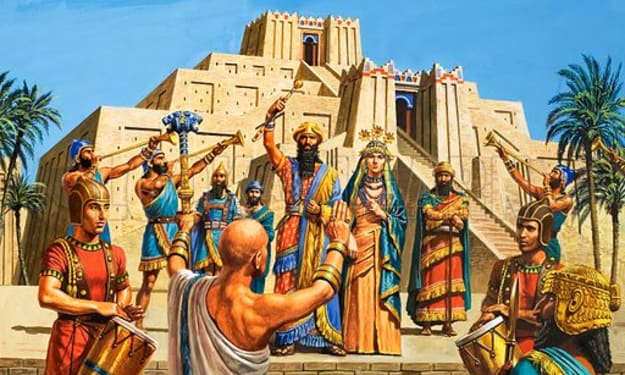The Indus Valley Civilization
A Story of Flourishing and Decline

The Indus Valley Civilization
The Indus Valley Civilization was an ancient civilization that flourished in the Indus River Valley in South Asia, which today lies in parts of Pakistan, India, and Afghanistan. This civilization flourished between 3300 and 1300 BCE, and was one of the earliest advanced civilizations in the world.
The Rise of the Civilization
The Indus Valley Civilization began to emerge in around 3300 BCE, in an area that was characterized by fertile soil and abundant water. This helped to support the growth of agriculture, leading to increased agricultural production and the stabilization of populations.
The rise of the civilization was also associated with the development of new technologies, such as pottery making and the use of metals. These new technologies helped to improve the lives of the people in the region, and made it possible for them to create more complex societies.
Society and Economy
Society in the Indus Valley Civilization was highly organized. There was a ruling elite class, consisting of kings, priests, and merchants. There was also a class of peasants and artisans.
The economy in the Indus Valley Civilization was based on agriculture. Farmers grew rice, wheat, barley, and corn. They also raised livestock, such as cattle, sheep, and goats.
Trade was also important to the economy in the Indus Valley Civilization. Merchants traded goods with other regions in Asia, such as Mesopotamia and Egypt.
The Culture of the Indus Valley Civilization
The Indus Valley Civilization was a rich and diverse culture that produced a wide range of artistic and cultural achievements. Here are some of the highlights of Indus Valley culture:
Art and architecture: The Indus Valley people were skilled artists and architects. They produced beautiful sculptures, pottery, jewelry, and other objects. They also built large and well-planned cities, such as Mohenjo-daro and Harappa.
Religion and spirituality: The Indus Valley people were polytheistic, and they worshipped a variety of gods and goddesses. They also had a strong belief in the afterlife.
Social life: The Indus Valley people lived in a complex society that was divided into classes. The upper class consisted of kings, priests, and merchants. The lower class consisted of peasants and artisans.
Trade and commerce: The Indus Valley people were involved in a thriving trade network with other civilizations in Asia. They traded goods such as textiles, pottery, and jewelry.
Writing: The Indus Valley people developed a unique writing system, but it has not yet been deciphered.
Art and Architecture
The Indus Valley people were skilled artists and architects. They produced beautiful sculptures, pottery, jewelry, and other objects. They also built large and well-planned cities, such as Mohenjo-daro and Harappa.
Sculpture: Indus Valley sculpture is characterized by its realism and naturalism. Many sculptures depict animals, humans, and gods and goddesses.
Pottery: Indus Valley pottery is known for its fine craftsmanship and intricate designs. Many pottery vessels are decorated with geometric patterns, flowers, and animals.
Jewelry: Indus Valley jewelry is made from a variety of materials, including gold, silver, and copper. Many jewelry pieces are decorated with beads, stones, and other ornaments.
Architecture: Indus Valley cities were well-planned and organized. The cities were divided into blocks, each with its own streets, houses, and public buildings. The cities also had a sophisticated system of sanitation, including public baths and sewers.
Religion and Spirituality
The Indus Valley people were polytheistic, and they worshipped a variety of gods and goddesses. Some of the most important gods and goddesses in Indus Valley religion include:
Pashupati: A god of fertility and agriculture
Shakti: A goddess of power and energy
Indara: A god of thunder and rain
Nirriti: A goddess of death and destruction
The Indus Valley people also believed in the afterlife. They buried their dead with grave goods, such as jewelry, pottery, and food.
Social Life
The Indus Valley people lived in a complex society that was divided into classes. The upper class consisted of kings, priests, and merchants. The lower class consisted of peasants and artisans.
The upper class lived in large, well-appointed houses. They had access to the best food, clothing, and education. The lower class lived in smaller houses and had to work hard to earn a living.
Trade and Commerce
The Indus Valley people were involved in a thriving trade network with other civilizations in Asia. They traded goods such as textiles, pottery, and jewelry.
The Indus Valley people traded with civilizations in Mesopotamia, Egypt, and Central Asia. They used a variety of trade goods, including gold, silver, copper, and precious stones.
Writing
The Indus Valley people developed a unique writing system, but it has not yet been deciphered. The writing system is characterized by its pictographic nature. Many of the symbols in the writing system depict animals, humans, and objects.
The Indus Valley writing system was used to record commercial transactions and historical events. It is possible that the writing system was also used for religious purposes.
Decline and Fall
The Indus Valley Civilization began to decline in around 1900 BCE. There are several possible reasons for this decline, including:
-Climate change, such as drought
-Floods
-Invasions by neighboring peoples
-In the end, the Indus Valley Civilization collapsed in around 1300 BCE.
Legacy of the Civilization
The Indus Valley Civilization left an important legacy to the world. This civilization was one of the earliest advanced civilizations in the world, and it made many important contributions to humanity.
Some of the important contributions of the Indus Valley Civilization include:
The development of agriculture and crafts
The development of writing
The creation of highly organized societies
The remains of the Indus Valley Civilization still exist today. Many archaeological sites of this civilization have been found in Pakistan, India, and Afghanistan. These archaeological sites provide us with insights into this amazing ancient civilization.
Additional Information
Here are some additional information about the Indus Valley Civilization:
The people of the Indus Valley Civilization were known as Harappans.
The capital of the Indus Valley Civilization was the city of Mohenjo-daro.
Mohenjo-daro was a well-planned city with a grid-like street system.
The Indus Valley Civilization had a sophisticated system of sanitation, including public baths and sewers.
The Indus Valley Civilization also had a system of weights and measures.
The Indus Valley Civilization was a remarkable civilization that made significant contributions to the world. Its legacy continues to inspire and fascinate us today.
About the Creator
Hmid Abderrahmane
Abderrahman hmid, 23, a skilled content writer with translation expertise. Experienced in journalistic translation across fields. Owns a collection of unpublished fiction and creative stories awaiting an online debut. Thanks!






Comments
There are no comments for this story
Be the first to respond and start the conversation.